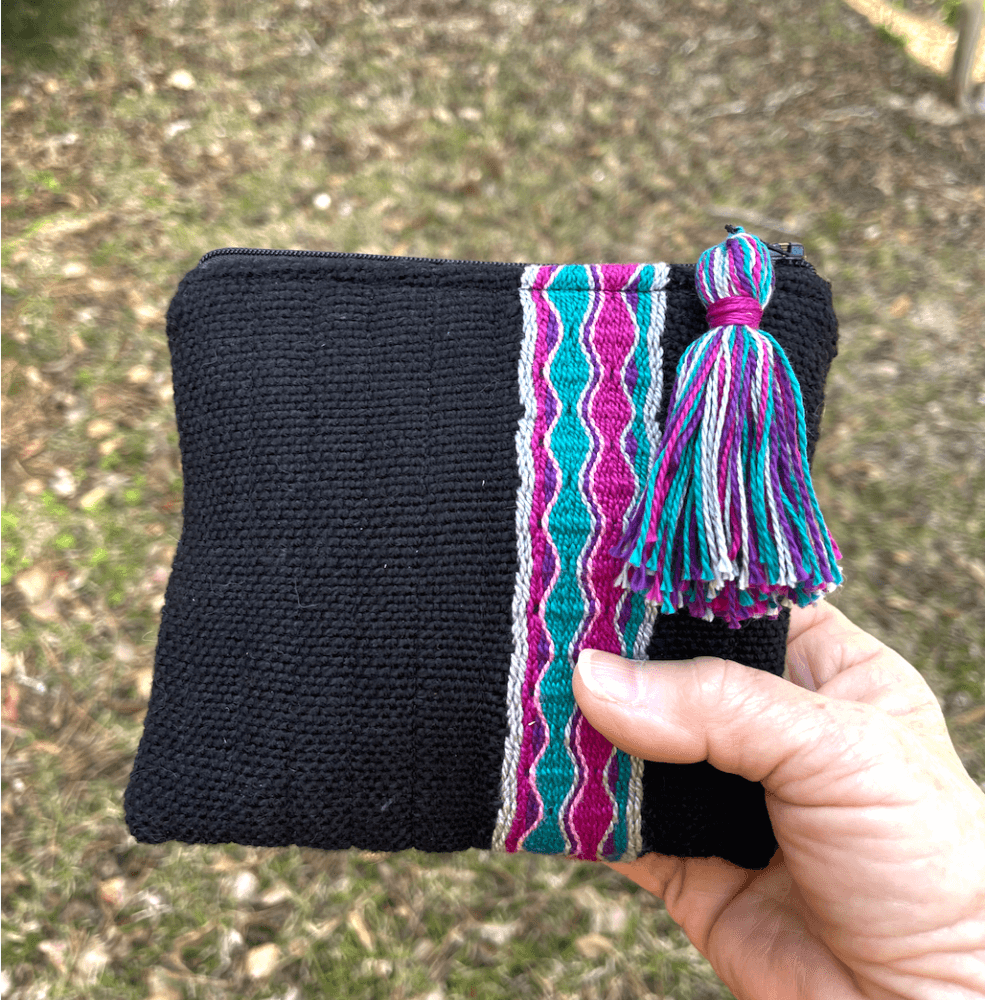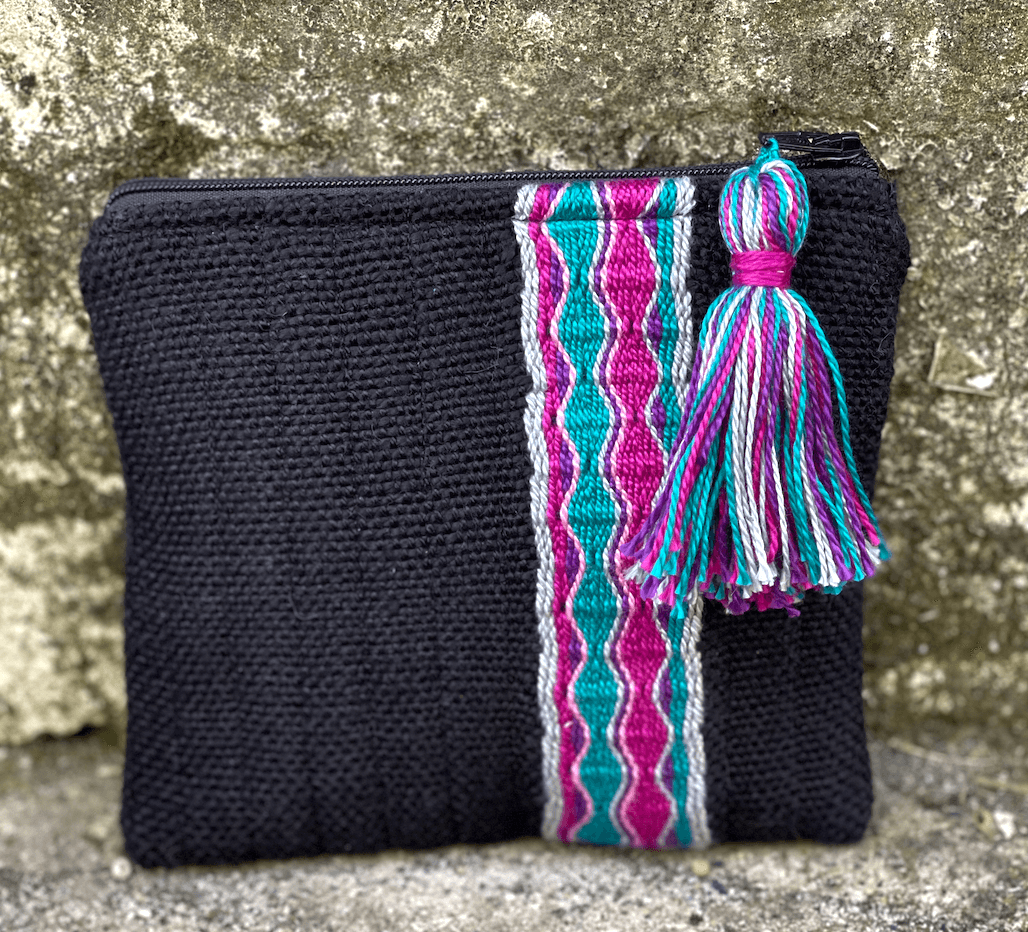Card (or Tablet) Weaving dates as far back as the 8th Century BC. There are many examples from throughout history, usually in the form of bands and belts.
The technique does not appear to have change much over the years. Simple cards made from wood or bone were, and still are, quite commonly used. In more modern times many weavers have chosen lighter, more easily obtainable, cards made from light cardboard or, as I have used here, playing cards. These cards have holes through which the threads pass. As the cards are rotated, the shed is opened. The number of holes, placement of thread colors and direction of rotation all play a part in the final woven pattern.
For this project I wanted to try something different. I wanted to see if I could weave a band in the center of a plain woven fabric using my Kromski Harp Forte.
And guess what ? I can!
I chose a simple pattern for my band so that I could focus on the experiment. If you are familiar with card or tablet weaving, then you will understand what I mean by a 4 forward, 4 back pattern. It has no twist build up, but because of the way that I have the loom set up, that actually would not have been a problem anyway.
For this project I used a 16″ Harp Forte with a Walnut finish. I also needed a Weavers Choice Heddle which I set up using only the 12 dent pieces, plus and additional 20 from a Set of Extra Dents. This gave me a total of 60 pieces. I placed 40 on the right side of the heddle, left a gap of a about 4″, and then set the other 20 dents on the left.
I warped up my cards according to the pattern by tying the ends to the front dowel, bringing the yarn through the appropriate hole in the card and then through the gap and off the back of the loom. I tied each card group together and kept the completed cards on a stitch holder as I worked.
Once I had them all on, I allowed them to hang off the back of the loom and used a water bottle as a weight. Do not attach the card threads along with the pain weave warp. Card weaving has significantly more take up than plan weave. This is also important when you plan your project. Be sure to allow more length to your card warp. I doubled mine which also gave me some to test the pattern on 1st.
I wanted to be sure I was happy with the band pattern so I wove several inches and adjusted the gap in the heddles to fit the width of the band. To make the adjustment I loosened the bolts on the heddle just slightly and then retightened them for weaving. *Note: I should have pushed the cards through the gap before narrowing it. As is I had to squeeze them through.
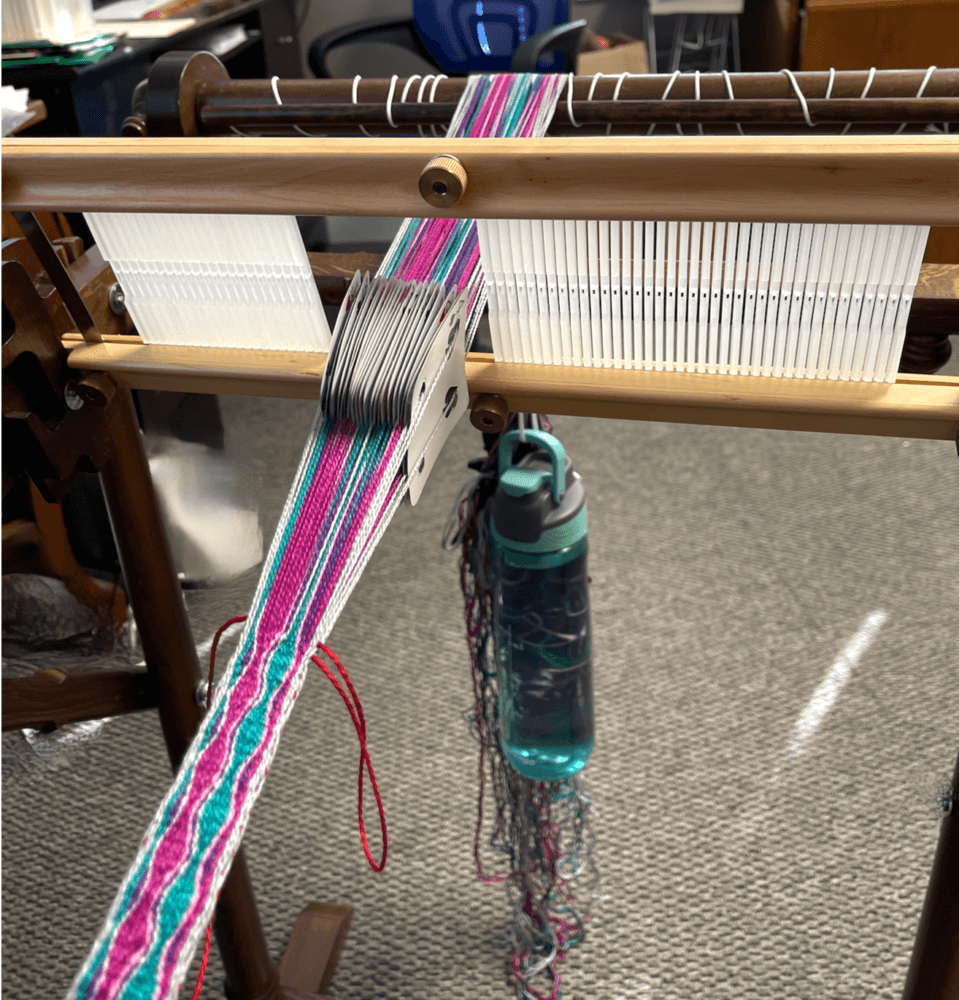
Once I was satisfied with the band pattern, I warped the plain weave section around the band as if it wasn’t there.
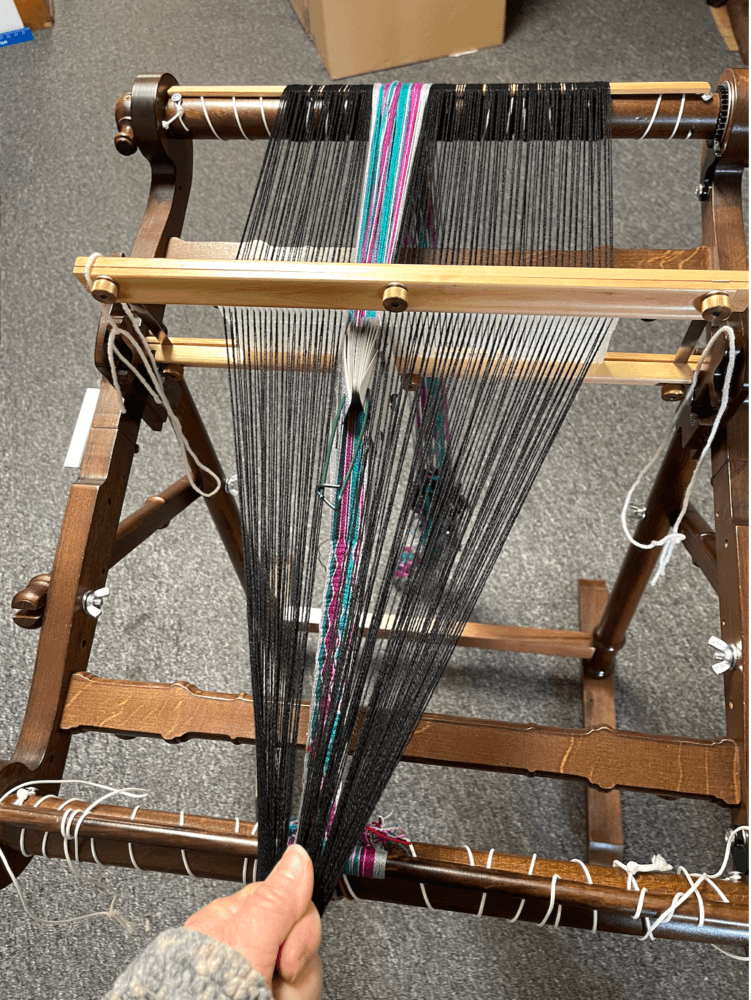
Make certain that the cards are locked in place with a stitch holder or a bit of yarn tied around them as you attach the warp. Otherwise you run the risk of them moving out of sequence.
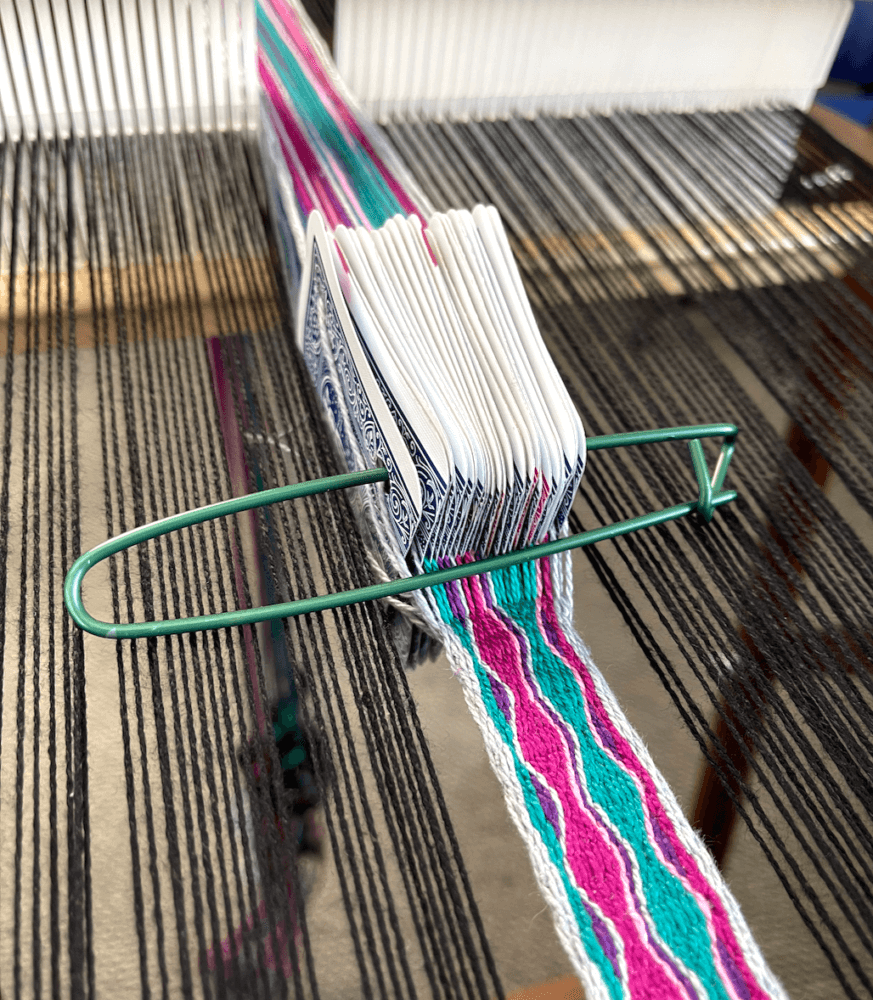
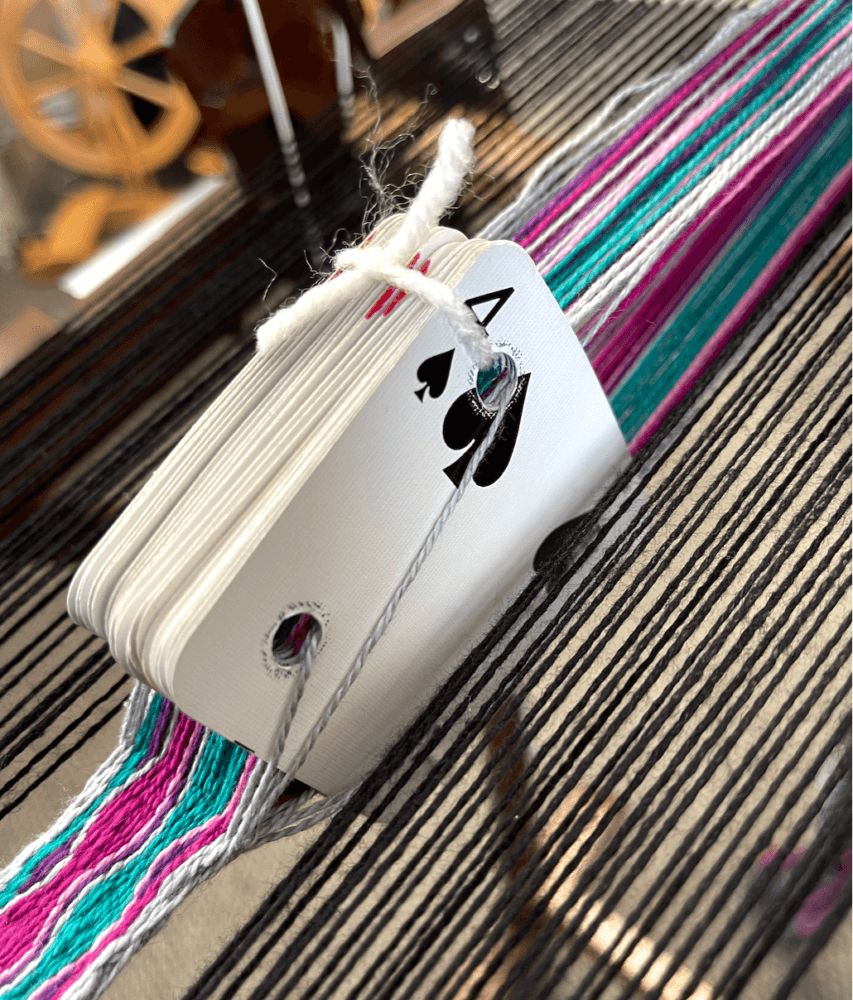
Then began the fun part! I experimented a bit with weaving the warp on either side of the band, but that idea didn’t end up in use, so I won’t include it here.
In order to really see the process of the weave, I suggest that you watch the video. It may make things clearer than what I can describe in words.
In case you prefer written instructions, I’ll explain as best as I can.
Before you can begin to weave, you must 1st push the cards through the gap so that they rest behind the heddle. Wind your shuttle, on one side only, with a weft that matches the plain warp.
Rotate your cards according to your pattern and separate the threads so that there is a clean shed. Raise the heddle to the up position while still keeping the upper shed of the band in hand. Pass the shuttle through. Do not bring the heddle forward. Instead use the edge of the stick shuttle to press the yarn in place.
Rotate your cards and again separate the yarn to open the shed. Put the heddle in the down position while holding the lower part of the band shed. Pass the shuttle and press the yarn in place. Give a gentle tug on the previous weft thread to remove any excess. Press the shuttle against the weft again.
Rotate your cards, place the heddle in the up position and follow the same steps as you pass the shuttle again. Give a small tug on the weft yarn.
Continue to work these 2 steps. Giving a tug on the previous weft after each pass. When I began my project I did not give this extra tug and before long my band became wider that it should have been. Drawing out the excess yarn solved this issue.
As the weaving progressed, I had some issues with my tension because the band is much thicker than the plain weave. I solved this by using additional warp sticks or paper on either side of the band as I advanced it onto the front beam.
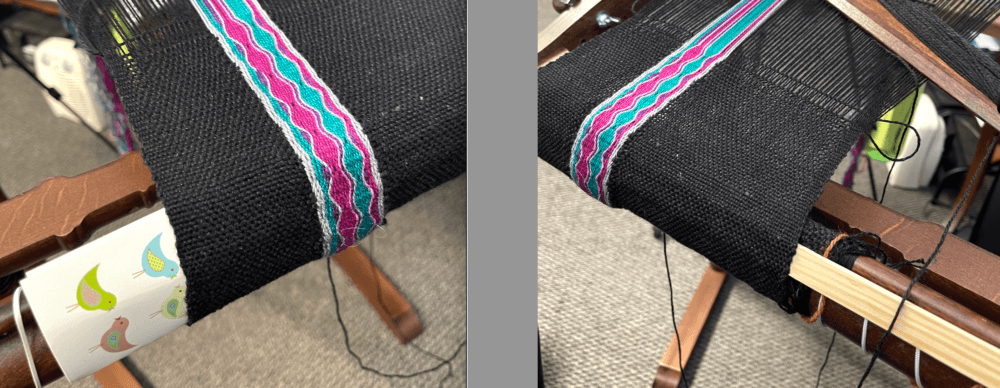
I wove the remainder of my short warp and removed it from the loom. I did a light wet finishing on it by simply soaking it for a few minutes and then laying it flat to dry.
My plan was to make a small zippered bag. As mentioned the band is somewhat thicker than the rest of the weave. This made the overall fabric feel unbalanced. To solve this, I stitched some fleece fabric to the back on either side of the band much as you would do when quilting. It worked perfectly.
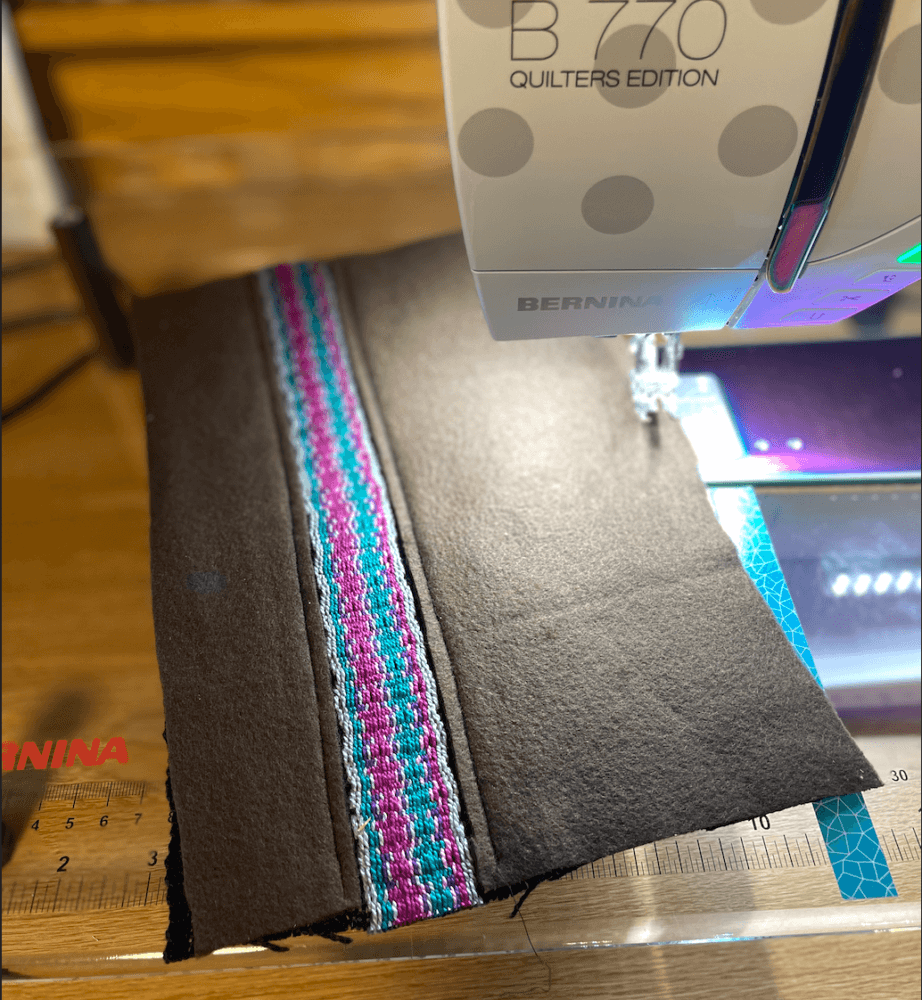

Once my fabric was prepared, I added a zipper and lining to make my bag. There are many tutorials on how to make a small zippered bag, so I won’t include that here. If you feel that the band is too thick for your sewing machine, my suggestion would be to slow down or even hand crank the machine through the thicker areas.
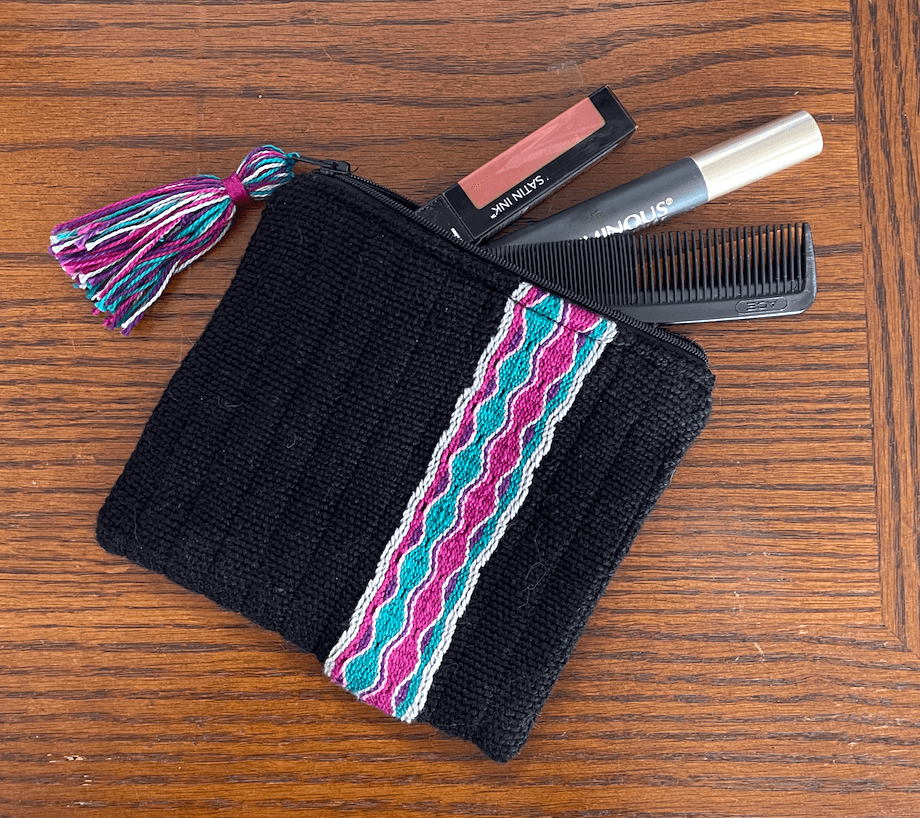
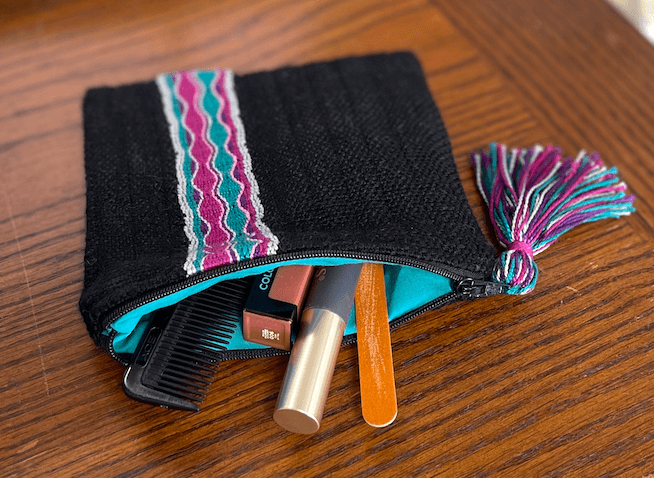
I added a tassel to complete my project.
I hope you will give this a try! I can think of many fun uses for this type of fabric. A jacket would look amazing don’t you think?
Tried it? Let us know on Facebook Kromski Fun!
